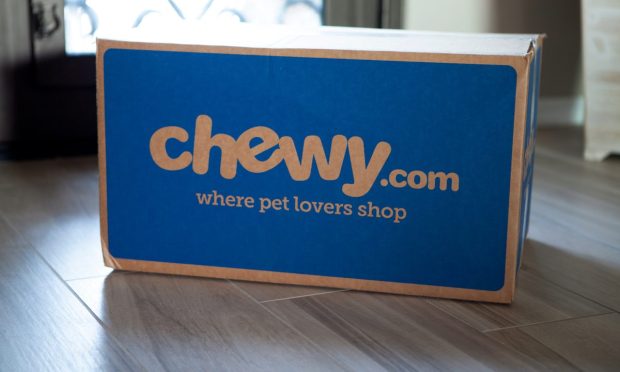Chewy Active Members Hit 20M in Q3, Strengthens Pet Platform Focus

Online pet supply retailer Chewy, like many companies, is struggling to get product where it needs it in a timely manner as supply chain bottlenecks continue across the world and labor remains difficult to find, elevating costs at a time when the company is trying to focus on its long-term strategy.
Chief Financial Officer Mario Marte said Thursday (Dec. 9) that Chewy had expected both the labor shortage and supply chain issues to improve in the third quarter, but that ultimately did not come to pass. The company ended up spending an incremental $30 million on higher wages, benefits, recruiting and hiring incentives in the quarter.
“Labor shortages continue to hinder our efforts to fully staff our fulfillment centers,” Marte told analysts on a conference call. “This affects our ability to process both inbound and outbound shipments and achieve optimal levels of operational productivity.”
He added that out-of-stocks “remain persistent in certain parts of the catalog,” especially in the wet food category, where Chewy had expected additional capacity to come online in recent months.
“That has yet to happen,” Marte said. “In fact, supply has become more constrained than it was in the second quarter.”
In the third quarter, Chewy recorded net sales of $2.2 billion, up 24% year over year and 86% on a two-year stack. The company had over 20 million active customers in the quarter, up nearly 15% compared to the same period last year, making $419 in net sales per customer, an increase of over 15%.
Offering Insurance
Rising costs and short supply isn’t stopping Chewy from forging ahead with the further buildout of its pet-centric platform, though, with the company earlier this week partnering with pet medical insurance company Trupanion to offer pet health insurance and wellness plans to Chewy customers. Through the partnership, Chewy will offer both preventative care wellness plans and comprehensive insurance plans for accidents, illnesses and chronic conditions starting in the spring.
Pet insurance in the U.S. currently has a 3% penetration rate, Chewy CEO Sumit Singh told analysts, compared to other markets such as the United Kingdom where the penetration is closer to 25%.
“So, we view this as a huge opportunity … to drive greater customer engagement, brand loyalty and greater consideration for healthcare purchases either on or through our platform,” Singh said.
The new insurance offering, the CEO noted, pairs with other features Chewy has recently been rolling out, including an expansion of its telehealth services and a new eCommerce marketplace for veterinarians launched in September.
“What you’re seeing us do here is we’re leaning into offering many different choices,” Singh said. “So, if you’re interested in insurance, we can offer you that. If you’re interested in telehealth, we can get you to that. If you just have a pharmacy prescription need, we can serve you the best customer experience in the market right now.”
Related: Chewy to Launch Marketplace for Vets in Expansion of Health Offerings
Chewy is also looking at expanding into “non-vet services,” such as grooming, boarding, puppy training or other pet services not related to healthcare. Singh estimated that the non-vet services market is between $10 billion and $14 billion.
“You can think about us building an ecosystem that has many tentacles and attracts customers through many different dimensions and keeps them within that ecosystem and connects it in a closed loop manner across the veterinarian community,” Singh said.
Looking Ahead
Marte said on the conference call that Chewy expects fourth-quarter net sales to be approximately $2.4 billion, representing growth between 17% and 19%. The full year outlook, therefore, has net sales projected to reach about $8.9 billion, which would amount to year-over-year growth of 25%.
At the same time, though, the CFO noted that “macro uncertainty remains elevated, and we expect supply chain disruptions, labor shortages, and product and inbound freight cost inflation will continue to weigh on near-term profitability.”
